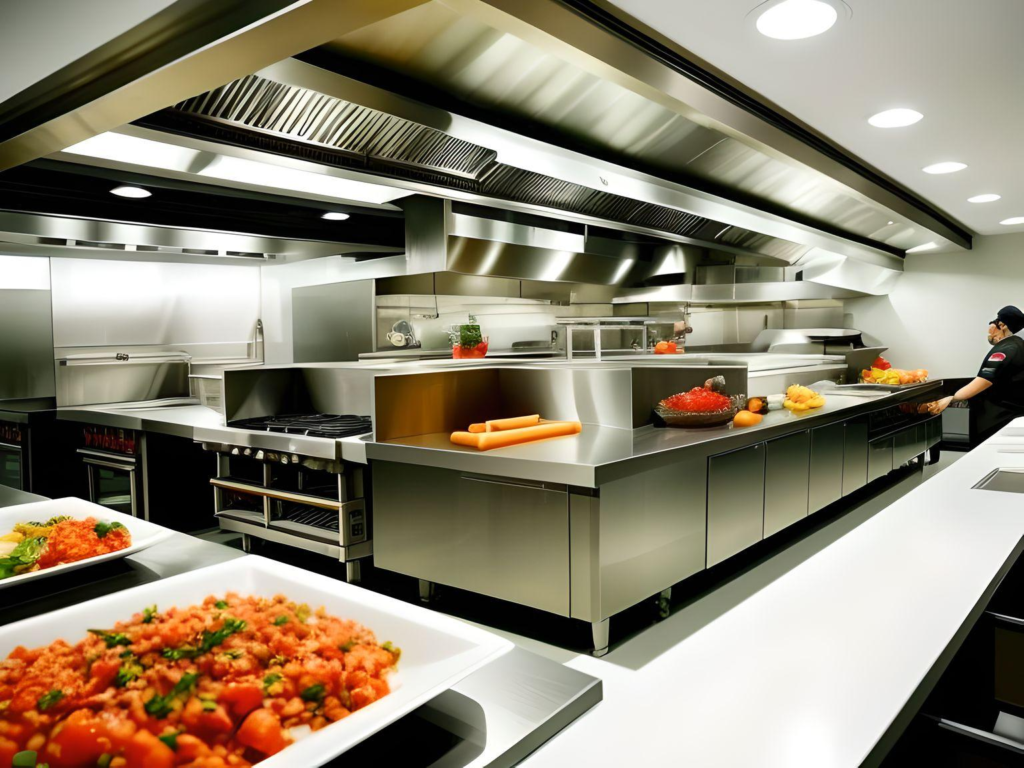In the fast-paced digital age, cloud kitchens face numerous challenges in maintaining efficient operations and staying competitive. Streamlining processes is crucial for operators to optimize resources, reduce costs, and enhance customer satisfaction. This article delves into three key areas of operational streamlining in cloud kitchens: embracing technology, workflow optimization, and data-driven decision making. By adopting efficient practices, cloud kitchen operators can overcome challenges and reap the benefits of a well-organized and profitable business.
Harnessing the power of Technology
Incorporating cutting-edge technology is vital for elevating operational efficiency in cloud kitchens. By harnessing the power of digital solutions, operators can seamlessly manage orders, maintain inventory control, and optimize supply chain processes. Here are some noteworthy examples of software and tools that can be employed to streamline various aspects of cloud kitchen operations:
1. Online ordering platforms: Innovative services such as Square for Restaurants and Toast offer a seamless ordering experience, enabling customers to place orders effortlessly through the cloud kitchen’s website or app. These platforms not only simplify the ordering process but also help operators manage orders efficiently and reduce errors.
2. Inventory management systems: Advanced tools like MarketMan and SimpleOrder empower operators to monitor inventory levels, automate procurement, and minimize food waste. By implementing these systems, cloud kitchens can maintain optimal stock levels, reduce spoilage, and ultimately cut costs.
3. Delivery management systems: Sophisticated solutions like Onfleet and Routific revolutionize delivery logistics by optimizing routes, providing real-time tracking, and ensuring prompt and accurate order fulfillment. These systems enhance the overall delivery experience for customers while improving operational efficiency for cloud kitchens.
According to a Technomic study, 63% of consumers prefer ordering directly from a restaurant’s website or app, underscoring the significance of integrating online ordering platforms. Moreover, case studies indicate that cloud kitchens utilizing inventory management systems can achieve up to an 8% reduction in food costs. By embracing technology, cloud kitchen operators can stay ahead of the curve, streamline their operations, and maximize profitability.
Mastering Workflow Optimization
Creating an efficient kitchen layout and workflow is paramount for maximizing space utilization, minimizing bottlenecks, and reducing order preparation time in cloud kitchens. By mastering workflow optimization, operators can enhance productivity, improve staff collaboration, and deliver a superior customer experience. Here are some key strategies and insights for achieving workflow optimization in cloud kitchens:
1. Zoning: Strategically divide the kitchen into functional zones, such as prep, cooking, and plating areas, to streamline processes and minimize cross-contamination. This approach allows staff to focus on their specific tasks, reduces the likelihood of errors, and promotes a more organized and efficient work environment.
2. Equipment placement: Thoughtfully arrange equipment to minimize unnecessary movement and improve efficiency. For example, place frequently used items close to the cooking area and store less frequently used items in designated storage areas. Consider the flow of ingredients from storage to preparation to cooking, and ensure that equipment placement supports this natural progression.
3. Ergonomics and space utilization: Design the kitchen layout with ergonomics in mind to reduce strain on staff and improve overall productivity. Optimize space utilization by incorporating vertical storage solutions, mobile workstations, and multi-functional equipment that can perform multiple tasks while occupying minimal space.
4. Staff training and communication: Invest in comprehensive staff training to ensure that team members are well-versed in their roles and responsibilities, enabling them to work efficiently and reduce errors. Encourage open communication and collaboration among staff to foster a positive work environment and facilitate the sharing of ideas and best practices.
5. Continuous improvement: Regularly review and assess the kitchen workflow to identify areas for improvement. Gather feedback from staff members, monitor key performance indicators, and implement changes as needed to optimize processes and maintain a high level of efficiency.
A case study of a cloud kitchen in New York City demonstrated that by redesigning their kitchen layout, implementing zoning, and focusing on ergonomics, they were able to increase order capacity by 30% and reduce order preparation time by 15%. By mastering workflow optimization, cloud kitchen operators can create a more productive and efficient work environment, ultimately leading to increased customer satisfaction and profitability.
Leveraging Data-Driven Decision Making
Data analysis is a powerful tool for cloud kitchen operators, enabling them to make informed decisions that drive business growth and enhance customer satisfaction. By leveraging data-driven decision making, operators can optimize their menus, forecast demand, and identify areas for improvement. Here are some key aspects and benefits of data-driven decision making in cloud kitchens:
1. Menu optimization: Analyze sales data to identify top-selling items and remove underperforming dishes, resulting in a more focused and profitable menu. Use data insights to inform menu development, ensuring that offerings align with customer preferences and market trends. This approach can also help operators identify opportunities for limited-time offers or seasonal specials that cater to customer demand.
2. Demand forecasting: Utilize historical data to predict future sales trends, enabling operators to make informed decisions about staffing, inventory, and promotions. Accurate demand forecasting can help cloud kitchens reduce waste, optimize labor costs, and ensure that they are well-prepared to meet customer expectations during peak periods.
3. Customer satisfaction: Monitor customer feedback and reviews to identify areas for improvement and enhance the overall customer experience. By addressing customer pain points and implementing changes based on data-driven insights, operators can build customer loyalty and drive repeat business.
4. Pricing strategy: Analyze data on customer spending habits and competitor pricing to develop a pricing strategy that maximizes profitability while remaining competitive in the market. Data-driven pricing can help operators identify opportunities for upselling, bundling, or offering value-added promotions that appeal to customers.
5. Marketing and promotions: Use data insights to inform marketing strategies and promotional campaigns, targeting the right audience with the right message at the right time. By leveraging data to optimize marketing efforts, cloud kitchens can increase brand awareness, attract new customers, and drive sales.
6. Operational efficiency: Analyze data on kitchen performance, such as order preparation time, delivery times, and staff productivity, to identify areas for improvement and implement changes that enhance operational efficiency. Data-driven insights can help operators streamline processes, reduce bottlenecks, and improve overall performance.
Research by McKinsey & Company found that data-driven organizations are 23 times more likely to acquire customers and 6 times more likely to retain them. Additionally, a study by Deloitte revealed that restaurants that leverage data analytics can achieve a 10% increase in revenue. By embracing data-driven decision making, cloud kitchen operators can make informed choices that drive business growth, improve customer satisfaction, and boost profitability.
In conclusion, streamlining operations in cloud kitchens is essential for operators to overcome challenges and achieve success in the digital age. By embracing technology, optimizing workflows, and making data-driven decisions, cloud kitchen operators can enhance efficiency, improve customer satisfaction, and boost profitability. As the industry continues to evolve, operators must stay agile and adapt to changing market conditions, leveraging the power of operational streamlining to stay ahead of the competition.





